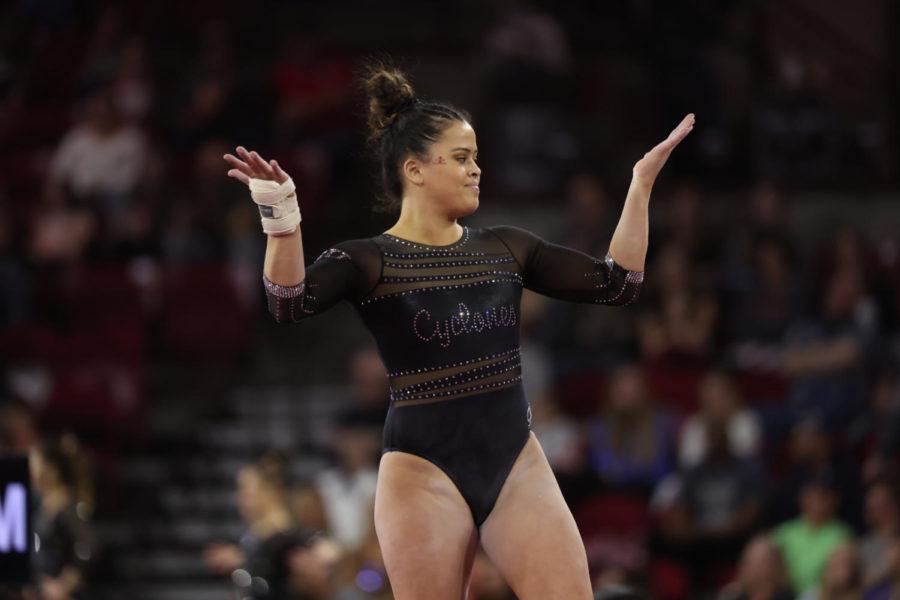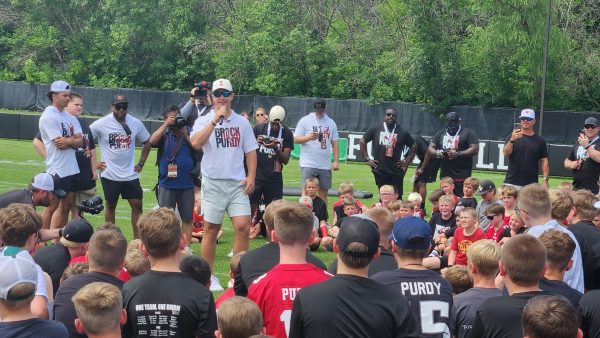An inside look at Iowa State international recruiting
May 9, 2022
Gymnast Ariana Orrego was representing Peru in the 2016 Olympics in Rio de Janeiro when she was asked what her plan was to pursue gymnastics going forward.
The person that asked the question was Nilson Medeiros, who was coaching for Venezuela at the Olympics and was an assistant coach for Iowa State gymnastics.
The simple question led Orrego to make an official visit to Iowa State to see if it was right for her. She enjoyed her time in Ames and decided to commit.
Orrego is one of 47 current athletes throughout Iowa State’s NCAA Division I sports that were born internationally. There are many aspects of recruiting that people do not always see, but these coaches and scouts have a method to how they approach this process.
So, does how does international recruiting work at Iowa State?
Iowa State Athletics spent $457,889 in total for recruiting during 2021. A large portion of this goes towards travel for the recruiters, recruits and housing.
Iowa State tennis coach Boomer Saia put the complicated process into perspective.
It starts with scouring through results online and coming up with a list of potential recruits. The next step is reaching out — social media or email works while trying to track down their contact information.
“From there, as you kind of formulate a relationship initially, that next step would be going to see them, going to see them train in their hometown or going to see them at a tournament, at least for tennis specifically, and kind of making your presence felt overseas for sure,” Saia said.
Saia said the large pool of players already makes things difficult, but another challenge has arisen. He said that it is becoming increasingly easier to find international talent, so it is now a rare occasion that a player that a school is recruiting is not being recruited by a few other schools.
“Usually you’re fighting against three, four or five other teams rather than maybe 10, 12 years ago, you might run into somebody recruiting, and they might not be talking to any schools,” Saia said.
Another thing that made international recruiting more difficult over the last couple of years was the COVID-19 pandemic. Saia said that the pandemic made it nearly impossible to recruit overseas a few years ago, and there are still difficulties today.
One of these difficulties has been the five-day quarantine when entering some countries. This has caused recruiting visits to be more expensive, and the coaches have to be more selective of recruiting visits in order to stay under budget.
Through the perspective of the athletes, leaving your home country to compete in a collegiate sport can be difficult. Not only are they leaving their family and friends, but they also at times have to adapt their language and culture.
Iowa State wrestler Yonger Bastida, who is from Cuba, said that while college wrestling was something that he really wanted to do, leaving his family to compete was still a difficult decision.
“I know I will be here for like two years or three years… without seeing my family in-person, so I think it was a difficult thing,” Bastida said.
For others such as Orrego, this decision is something that is relatively easy to make. It was something that she was looking to pursue, her parents approved of and she still returns to Peru a few times every year to be with family.
“I was gonna do what I like, which is gymnastics, and then I was also gonna get an education, which is also something I was planning on doing,” Orrego said. “So my parents thought it was a good opportunity.”
Regardless, this is a big life decision for the athletes, and it comes with both challenges and benefits.
Filling up a roster with international recruits has its challenges, but the biggest one for both Saia and Iowa State gymnastics coach Jay Ronayne is the language barrier.
“Being able to communicate effectively is a different experience with someone that their first language is completely foreign to me,” Ronayne said.
Bastida said that both language and learning a new style of wrestling were the biggest challenges when he came to Iowa State; however, Bastida finds the challenge to also be the best part of the experience.
“I think the best part is the challenge, because all wrestlers, we love challenge,” Bastida said. “Every single day we’ve got a new challenge.”
Saia and Ronayne also shared that sentiment from Bastida as the best part of having a team with international recruits on it, both agreeing that the ability for the team to share cultures with each other is something that is very exciting to them.
“I think it’s a pretty incredible thing to have a team that is so diverse culturally, that for the rest of their lives, they will have best friends all around the world,” Ronayne said.
Pitching Iowa State to someone that is from another country is not as difficult as one might expect according to Ronayne. He said it is about selling the school, the experience and the program.
“It’s not necessarily we’re selling Iowa; it just happens to be that that’s where we are,” Ronayne said. “And I tell every kid domestically and internationally when we’re recruiting them that somebody told me a long time ago that it’s not the place, it’s the people.”

















